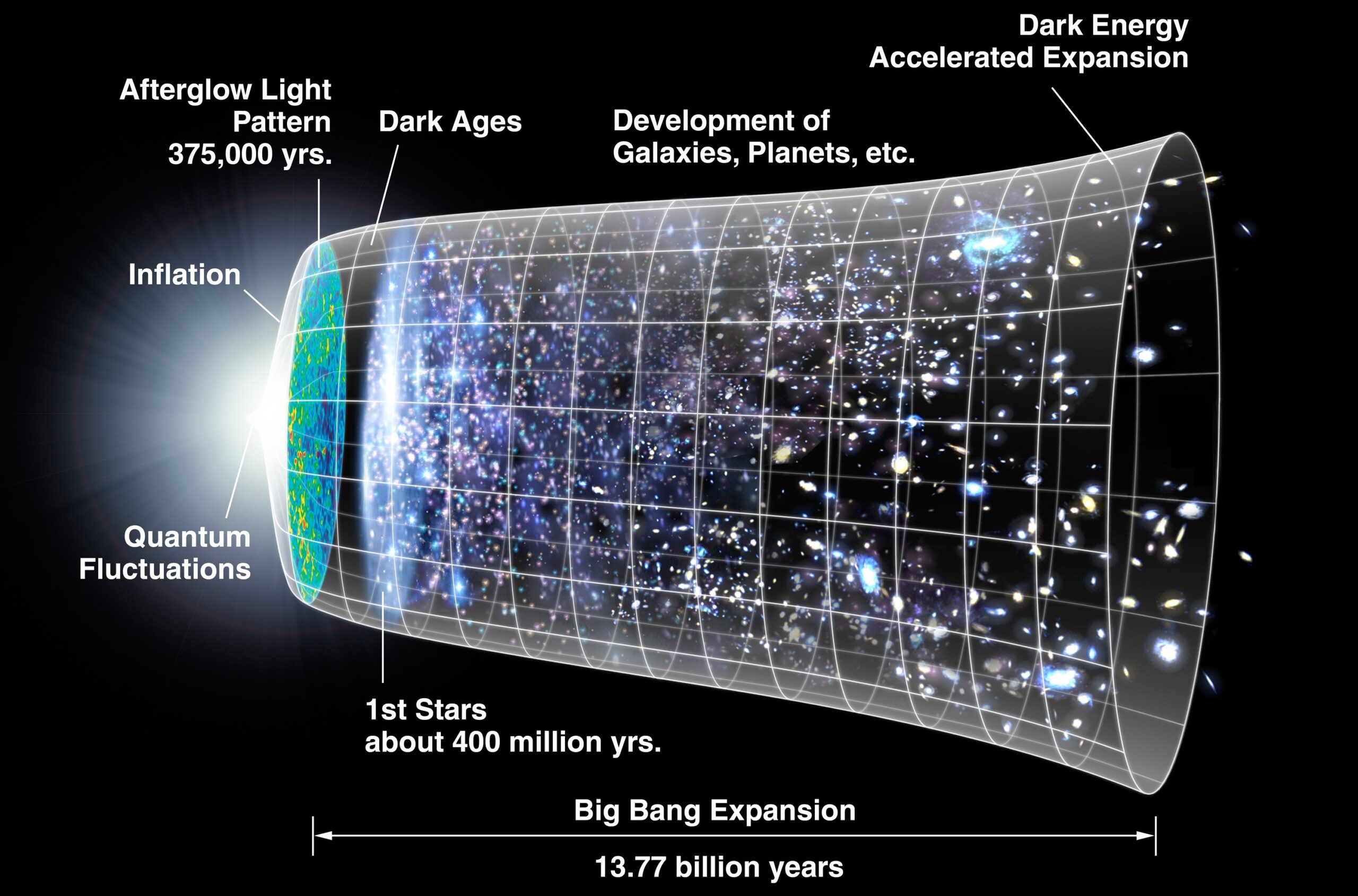The Big Bang Theory is a scientific model that explains how the universe came to be. It is based on several lines of evidence, including the cosmic microwave background radiation, the observed distribution of galaxies, and the abundance of light elements.
The idea that the universe had a beginning can be traced back to the early 20th century, when astronomer Edwin Hubble discovered that distant galaxies were moving away from us. This observation suggested that the universe was expanding, and if we extrapolated this expansion backwards in time, we could infer that the universe had a starting point – a singularity.
The Big Bang Theory proposes that the universe began as an extremely hot and dense state, with all the matter and energy packed into a single point. Then, for reasons still unknown, the universe began to rapidly expand and cool, allowing particles to form and eventually leading to the formation of atoms, stars, galaxies, and eventually life.
One of the key pieces of evidence that supports the Big Bang Theory is the cosmic microwave background radiation (CMB). This is a faint glow of microwave radiation that permeates the entire universe, and is thought to be leftover radiation from the Big Bang itself. The CMB has been measured with incredible accuracy by a number of different experiments, and its properties match what we would expect if the universe had a hot, dense beginning.
Another piece of evidence for the Big Bang Theory is the observed distribution of galaxies. The theory predicts that the universe should look roughly the same in all directions, with galaxies distributed evenly on large scales. This has been confirmed by numerous surveys of the sky, which show that galaxies are indeed distributed in a roughly homogeneous way.
The abundance of light elements is also consistent with the Big Bang Theory. The theory predicts that the early universe was hot enough to allow protons and neutrons to combine into atomic nuclei, a process called nucleosynthesis. The relative abundance of different elements that were formed during nucleosynthesis depends on the temperature and density of the early universe, and these predictions match the observed abundances of light elements like hydrogen, helium, and lithium.
Despite the wealth of evidence supporting the Big Bang Theory, there are still some unanswered questions and puzzles that scientists are working to solve. For example, the theory doesn’t explain why the universe is structured the way it is on large scales, with galaxies and galaxy clusters distributed in filaments and voids. It also doesn’t explain the nature of dark matter and dark energy, two mysterious substances that are thought to make up most of the mass-energy content of the universe.
In conclusion, the Big Bang Theory is a powerful scientific model that explains the origin and evolution of the universe. It is supported by a wide range of observations and experiments, and has been the subject of intense study and research for many decades. While there are still many mysteries and unanswered questions about the universe, the Big Bang Theory provides us with a framework for understanding how it all began.



